From the February 18, 1994 Chicago Reader. I wrote this before I had a chance to see the film’s original rough cut, when it was still a musical, which I continue to regard as far and away James L. Brooks’ best movie, more than twice as good as what he finally released.. By contrast, the release version reminds me of Erich von Stroheim’s comment about the release version of his Foolish Wives: “They are showing only the skeleton if my dead child.” [2021 afterthought: This now strikes me as more than a little hyperbolic. Some of the musical version of the film is great, but a fair amount of it is weak and/or doesn’t work very well. For more on the subject, go here.] — J.R.

** I’LL DO ANYTHING
(Worth seeing)
Directed and written by James L. Brooks
With Nick Nolte, Whittni Wright, Julie Kavner, Albert Brooks, Joely Richardson, Tracey Ullman, Jeb Brown, and Angela Alvarado.



First riddle: How can a movie about Hollywood professionals also be a movie about learning to be a parent? Answer: When all the Hollywood professionals in the movie act like kids or parents.

However disjointed it felt the first time I saw it, James L. Read more
From the Chicago Reader (July 17, 1992). — J.R.

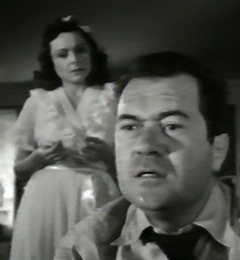
Conceivably the most anti-American Hollywood picture ever made — I certainly can’t think of any competitors — Cy Endfield’s brilliant and shocking thriller (originally known as The Sound of Fury) was adapted by Jo Pagano from his novel The Condemned, which was inspired by a lynching that occurred in California in the 30s. A frustrated and jobless veteran (Frank Lovejoy), tired of denying his wife and son luxuries, falls in with a slick petty criminal (Lloyd Bridges), and the two work their way up from small robberies to a kidnapping that ends in murder. Apart from an unnecessary moralizing European character, this masterpiece is virtually flawless, exposing class hatreds and the abuses of the American press (represented here by Richard Carlson as a reporter) with rare lucidity and anger. At once subtle and unsparing, this may be the best noir thriller you’ve never heard of, perhaps because Endfield’s American career was cut short by the blacklist the same year it was released (1951). With Kathleen Ryan, Katherine Locke, Adele Jergens, and Art Smith. (Film Center, Art Institute, Columbus Drive at Jackson, Friday, July 17, 7:45, 443-3737)

 Read more
Read more
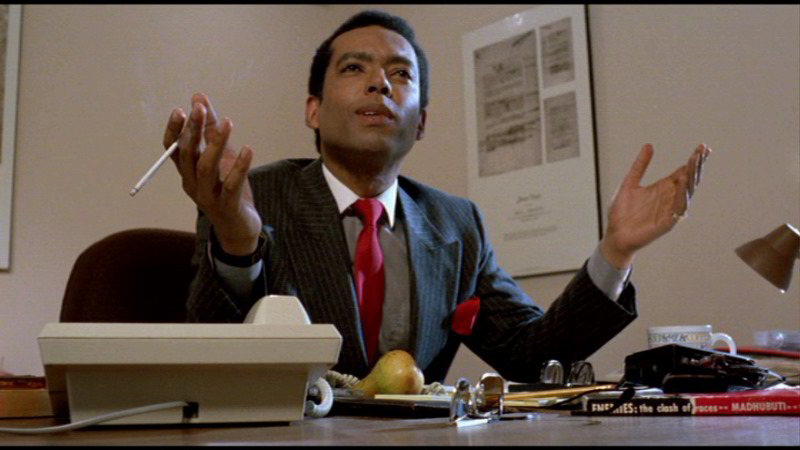
This highly original existential black comedy (1991) charts the real-life exploits of William Douglas Street (played with a great deal of charisma and wit by writer-director Wendell B. Harris Jr.), a Detroit con man. From the late 70s to the mid-80s Street carried off a number of impersonations, presenting himself as a Time magazine reporter, a surgery intern (he performed 23 successful operations), a Caribbean exchange student at Yale, and a civil rights attorney; various other scams landed him in prison. Without wasting any time on facile psychologizing, Harris uses his subject as a means to explore the paradoxes of acting (some of Street’s real-life victims play themselves) and the invisibility of blacks in the U.S.; Street is also the source of some very funny comedy. In all, this disturbing yet compelling rogue’s progress calls to mind an 18th-century picaresque novel. Harris’s eclectic directorial style doesn’t always sustain itself, but it’s brimming with inventive ideas. R, 94 min. (JR) Read more
From the Chicago Reader (May 3, 1991). — J.R.
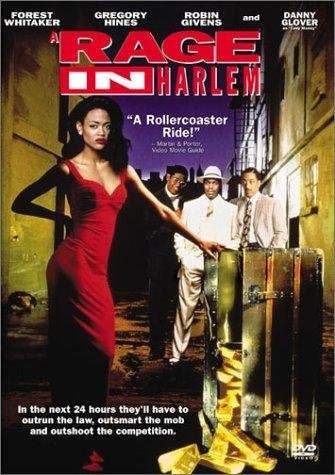
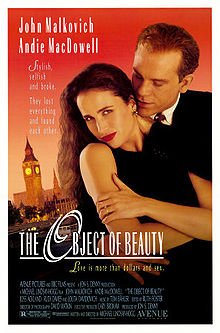
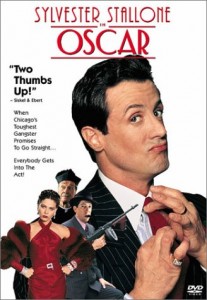
A RAGE IN HARLEM
*** (A must-see)
Directed by Bill Duke
Written by John Toles-Bey and Bobby Crawford
With Forest Whitaker, Gregory Hines, Robin Givens, Zakes Mokae, Danny Glover, Badja Djola, and John Toles-Bey.
THE OBJECT OF BEAUTY
** (Worth seeing)
Directed and written by Michael Lindsay-Hogg
With John Malkovich, Andie MacDowell, Joss Ackland, Rudi Davies, Peter Riegert, Lolita Davidovich, and Ricci Harnett.
OSCAR
* (Has redeeming facet)
Directed by John Landis
Written by Michael Barrie and Jim Mulholland
With Sylvester Stallone, Peter Riegert, Joey Travolta, Elizabeth Barondes, Tim Curry, Vincent Spano, Ornella Muti, and Joycelyn O’Brien.
With at least three new comedies around at the moment — four counting the semicomic Impromptu — it seems like the silly season is fully upon us. Although the three urban comedies under review are set in different decades (Oscar in the 30s, A Rage in Harlem in the 50s, The Object of Beauty in the present), they all appear at first to be equally concerned with money — the thing that keeps the wheels of their complicated farcical plots turning. All have something to do with sex and romance as well, but it’s clearly money that holds the sex and romance in place. Read more
From the Chicago Reader (September 22, 1989). — J.R.

SHIRLEY VALENTINE
** (Worth seeing)
Directed by Lewis Gilbert
Written by Willy Russell
With Pauline Collins, Tom Conti, Julia McKenzie, Alison Steadman, Bernard Hill, Joanna Lumley, and Tracie Bennett.

I had my first experience of English theater in London’s West End around the mid-1960s–a program of three one-act plays written by and starring Noel Coward. (I no longer remember the show’s title, but I believe it was Coward’s last theater piece.) [2011 postscript: this was Suite in Three Keys, in 1966.] The plots of all three plays were fairly slender, and the mise en scene, as I recall, was strictly conventional. What was remarkable about the overall performance, and quite characteristic (as I soon discovered) of the English theater in general, was the extraordinary, almost conspiratorial rapport between Coward the actor and his audience — a very cozy kind of intimacy that reflected the appeal of the three characters Coward was playing and very little else. The stories and direction were nothing more than the recipes and the cooking necessary to serve these characters up to the public for its delectation, and once combined the ingredients retained no attributes of their own; all that remained was Coward’s plump, juicy, quirky personality. Read more
From the Chicago Reader (October 14, 1994). — J.R.

**** SATANTANGO
(Masterpiece)
Directed by Bela Tarr
Written by Tarr and Laszlo Krasznahorkai
With Mihaly Vig, Putyi Horvath, Erika Bok, Peter Berling, Miklos B. Szekely, Laszlo Fe Lugossy, Eva Almasi Albert, Alfred Jaray, Erzsebet Gaal, Janos Derzsi, and Iren Szajki.
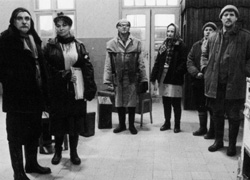
If great films invent their own rules, reinventing some of the standards of film criticism in the process, Bela Tarr’s Satantango surely belongs in their company. Showing Sunday as part of the Chicago Film Festival, this very dark Hungarian black comedy has more than a few tricks and paradoxes up its sleeve. Shot in black and white, with a running time of just under seven hours (it’s designed to be shown with two short intermissions), it boasts a decrepit, squalid rural setting enveloped in constant rain and mud and a cast of about a dozen greedy, small-minded characters, none of whom has any remotely redeeming qualities. Yet over two separate viewings it has provided me with more pleasure, excitement, and even hope than any other new picture I’ve seen this year.
I’m not the only one who feels this way. Since the film surfaced at the Berlin Film Festival in February and was enthusiastically heralded by J. Read more
From the Chicago Reader (January 28, 1994). — J.R.

** THE ACCOMPANIST
(Worth seeing)
Directed by Claude Miller
Written by Miller and Luc Beraud
With Richard Bohringer, Elena Safonova, Romane Bohringer, Samuel Labarthe, Julien Rassam, Nelly Borgeaud, and Claude Rich.
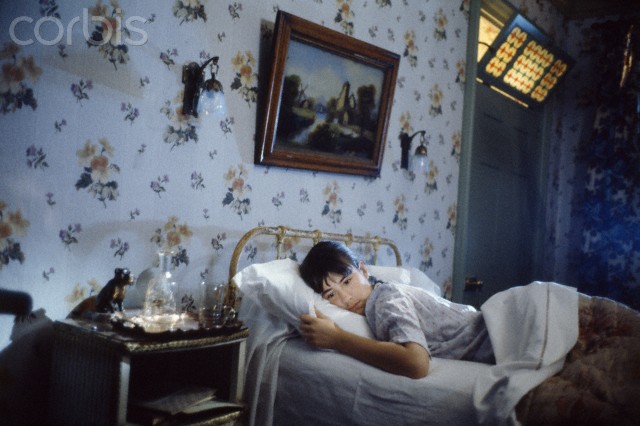
“About six years before the disappearance of Ambrose Small, Ambrose Bierce had disappeared. Newspapers all over the world had made much of the mystery of Ambrose Bierce. But what could the disappearance of one Ambrose, in Texas, have to do with the disappearance of another Ambrose, in Canada? Was somebody collecting Ambroses? There was in these questions an appearance of childishness that attracted my respectful attention.” — Charles Fort, Wild Talents (1932)
The Accompanist can be viewed as a producer’s film, as a writer-director’s film, and as a quintessentially French film. As a producer’s film, it is the latest in a recent cycle of French art movies involving classical musicians and including extended stretches of classical music — in other words, as a spin-off of Tout les matins du monde and Un coeur en hiver, both huge commercial successes, especially in France. As all three films have the same producer, Jean-Louis Livi, they can be regarded as “Livi films” rather than as the discrete expressions of three directors. Read more
From the Chicago Reader (September 1, 2000). — J.R.
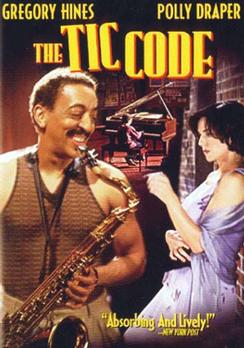
The Tic Code
**
Directed by Gary Winick
Written by Polly Draper
With Gregory Hines, Draper, Christopher George Marquette, Desmond Robertson, Carol Kane, Carlos McKinney, Dick Berk, John B. Williams, and Tony Shalhoub.
Writing about Finnegans Wake, James Joyce’s most musical book, the late William Troy had the perspicacity to point out that “a word, in the terminology of modern physics, is a time-space event. It is not too much to say that for the poet no word in a language is ever used twice exactly in the same way.” Since a musical note is also a time-space event — repeatable on paper, CD, or tape but not in live performance — existentially speaking an improvised jazz solo is a journey, a dramatic and social act that can happen only once.

It’s possible to capture certain aspects of jazz performances in words, as critic Whitney Balliett and novelist Rafi Zabor (in the wonderful The Bear Comes Home) have amply demonstrated. But what film can do poetically with jazz solos is much less certain. It might be argued that most films and most jazz solos have stories to tell, but getting their stories to coincide is not an easy task. Read more
From the Chicago Reader (June 22, 2001). — J.R.
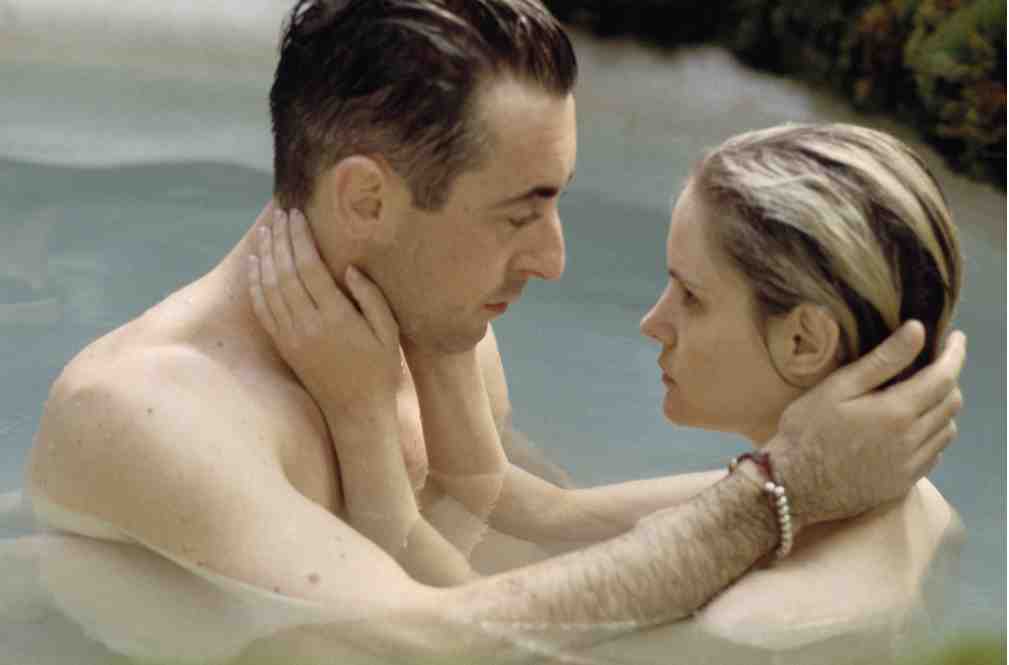
The Anniversary Party
Rating *** A must see
Directed and written by Jennifer Jason Leigh and Alan Cumming
With Leigh, Cumming, John Benjamin Hickey, Parker Posey, Phoebe Cates, Kevin Kline, Denis O’Hare, Mina Badie, Jane Adams, John C. Reilly, Jennifer Beals, Matt Malloy, Michael Panes, and Gwyneth Paltrow.
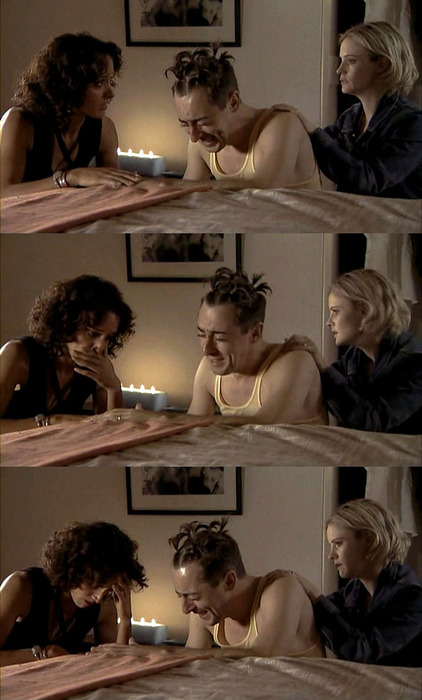
The Anniversary Party was written and directed by two actors, Alan Cumming and Jennifer Jason Leigh, who created all the parts specifically for themselves and actors they knew. So it’s no surprise that a handful of the characters at this dusk-to-dawn Hollywood party, celebrating the sixth wedding anniversary of Joe (Cumming) and Sally (Leigh), are themselves professional actors (played by Gwyneth Paltrow, Jane Adams, Kevin Kline, and Phoebe Cates, the latter two a real-life couple whose son and daughter are also featured). The other guests are different sorts of people: a film director (John C. Reilly), Joe and Sally’s business managers (Parker Posey and John Benjamin Hickey), a photographer (Jennifer Beals), a musician (Michael Panes), and the next-door neighbors (Mina Badie and Denis O’Hare), awkward mixers who’ve been invited mainly because they’ve been threatening to sue Joe and Sally. (The husband, a novelist, claims that the barking of their dog disrupts his work.) Read more
Commissioned by Artforum‘s web site and published by them on December 8, 2010 in a somewhat different version. — J.R.
“The Holocaust is about six million people who get killed,” Stanley Kubrick reportedly said to screenwriter Frederic Raphael in the late 1990s. “Schindler’s List was about six hundred people who don’t.” One of the most striking things about this remark is its placement of the Holocaust in the present and a film made half a century later in the past.
These are the priorities of Claude Lanzmann’s Shoah (1985), 550 minutes long, widely and in some ways justly regarded as the greatest film about the Holocaust. But they’re also the priorities of Alain Resnais and Jean Cayrol’s Nuit et brouillard (Night and Fog, 1955), only thirty-one minutes long, which in many respects made Shoah possible. Shoah even quotes Night and Fog about forty-three minutes into the film — Resnais’s low-angle dolly following grassy railroad tracks that lead to an Auschwitz crematorium is virtually reprised and extended, though Resnais’ use of Eastmancolor is even more vivid.
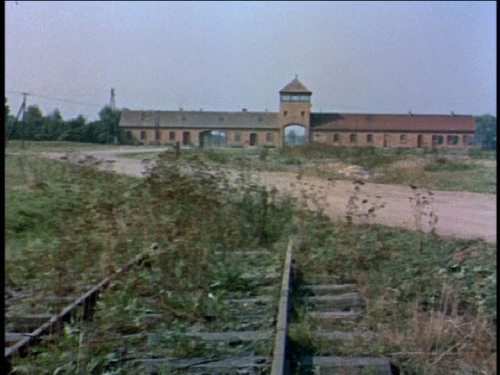

One shouldn’t have to choose between these masterpieces. But it’s important to stress that they aren’t about precisely the same Holocaust and that their formal strategies for juxtaposing past and present are quite different. Read more
From Sight and Sound (October 2008), in response to a poll query about what film criticism had had the greatest effect on me and inspired me to become a film critic — J.R.
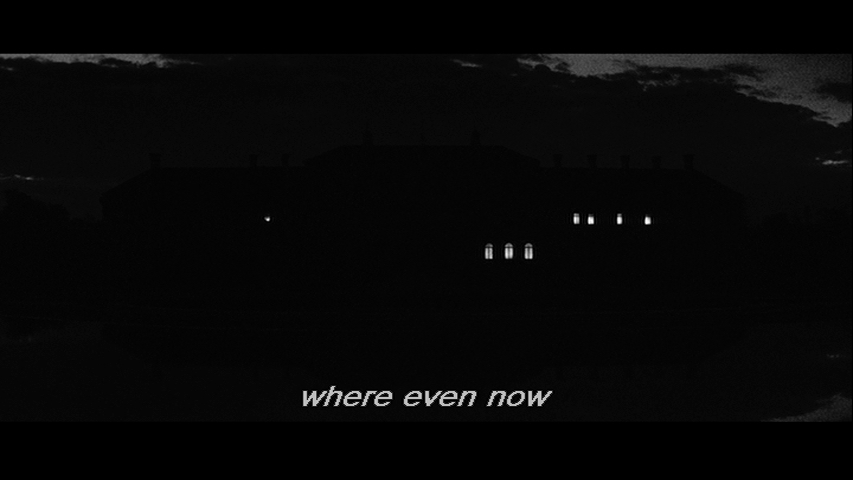
From Penelope Houston’s review of Last Year in Marienbad in the Winter 1961-62 issue of Sight and Sound:
…And so she goes to the midnight meeting with the stranger, sits waiting rigidly for the clock to strike, leaves with him. But about this ending there is no sense of exaltation or relief. She goes because she has no choice, because for her all the possibilities have narrowed down to a single decision, but she has no idea where she is going. The stranger’s final words offer no comforting clue: “It seemed, at first sight, impossible to lose yourself in that garden… where you are now already beginning to lose yourself, for ever, in the quiet night, alone with me.” The film’s last shot is of the great chateau; and, with its few lighted windows, it no longer looks like a prison but like a place of refuge.

I read this review in my late teens, before I saw Resnais’ glorious masterpiece and quite a few years before I ever met Penelope. Read more
From the Chicago Reader (October 26, 1995). This date is a guess and an estimate; the Reader gives the date of this capsule as a decade earlier, a couple of years before I started writing for the paper. — J.R.
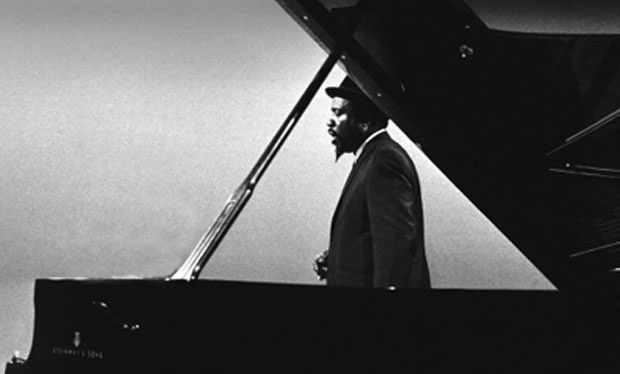
The core of Charlotte Zwerin’s exciting if vexing 1989 documentary about the great jazz pianist and composer — brought to us courtesy of Clint Eastwood, executive producer — is drawn from 14 hours of footage of Monk, in performance and offstage, shot by Michael and Christian Blackwood over six months in 1968. The musical value of this footage is so powerful that nothing can deface it, despite the best efforts of Zwerin to do so: all the worst habits of jazz documentaries in treating the music, from cutting off numbers midstream to burying them with voice-overs (which also happens on the sound track album), are routinely employed; adding insult to injury are the merely adequate performances (by contemporary piano duo Tommy Flanagan and Barry Harris) of two unabridged Monk tunes. The offstage footage of Monk and the accounts by friends and family of the mental illness that plagued his final years aren’t very illuminating — though here the film at least has the virtue of not presuming to tread beyond the limits of its understanding — and there’s virtually no analysis of the importance of Monk’s music on a technical level. Read more
From the Chicago Reader (October 22, 1993). — J.R.
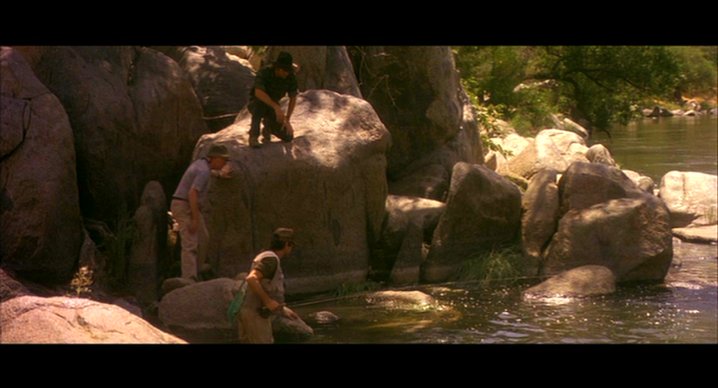
SHORT CUTS
*** (A must-see)
Directed by Robert Altman
Written by Altman and Frank Barhydt
With Anne Archer, Bruce Davison, Robert Downey Jr., Peter Gallagher, Jennifer Jason Leigh, Jack Lemmon, Lyle Lovett, Andie MacDowell, Frances McDormand, Matthew Modine, Julianne Moore, Chris Penn, Tim Robbins, Annie Ross, Lori Singer, Madeleine Stowe, Lili Taylor, Lily Tomlin, Fred Ward, and Tom Waits.
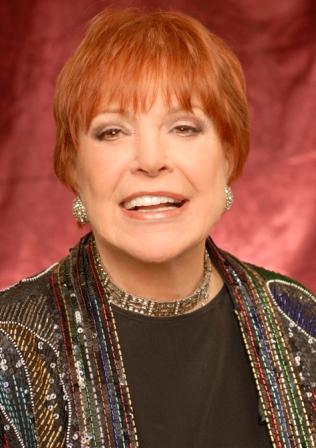
Annie Ross — the tough and resourceful British-born jazz singer Kenneth Tynan once called “a carrot-head who moves us and then brushes off our sympathy with a shrug of her lips” — projects the kind of caustic soul that seems made for a Robert Altman film. And nothing in Altman’s 189-minute Short Cuts moves me quite as much as her rendition of “I’m Gonna Go Fishin’,” sung and swung over the final credits, which roll past a set of overlapping maps of Los Angeles.
The number meshes with the movie in unexpected and mysterious ways. Its trout-fishing motif sends us back to one of the film’s key episodes and its aftermath — a trout dinner for two couples on a terrace overlooking LA that expands into an all-night party, a recapitulation of many of this movie’s other motifs and themes: Jeopardy, clown costumes, makeup, marital infidelity, partying, unemployment. Read more
From the Chicago Reader (April 1, 1991). Happily, this film can be accessed for free at http://ubu.com/film/ahwesh_deadman.html –– J.R.
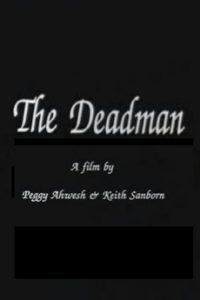

Running 37 minutes, Peggy Ahwesh and Keith Sanborn’s free and liberating (as well as liberated) 1989 adaptation of Georges Bataille’s untranslated story Le morte is one the most exciting and accomplished experimental film I saw during the 1990s. It charts the adventures of a nearly naked heroine who leaves the corpse of her lover in a country house, goes to a bar, and sets in motion a scabrous free-form orgy before returning to the house to die. The film manages to approximate the transgressive poetic prose of Bataille while celebrating female sexual desire without the usual patriarchal-porn trimmings. Equally remarkable for its endlessly inventive sound track and its beautiful black-and-white photography, it bears the earmarks of an authentic classic. The relationship between the visual storytelling, the ornate printed titles, and the occasional voice-over is both subtle and complex, mixing tenses and cross weaving modes of narration with a unique fusing of abandon and rigor. (JR)
 Read more
Read more
From the Chicago Reader (November 13, 1992). — J.R.
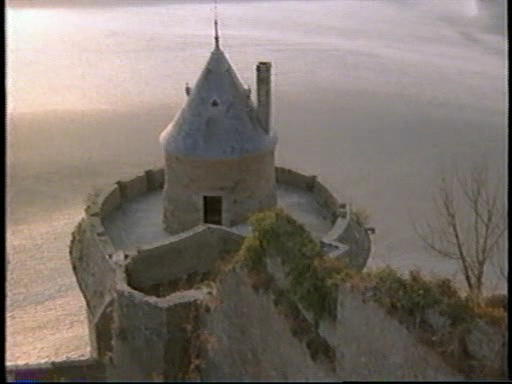
MINDWALK
** (Worth seeing)
Directed by Bernt Capra
Written by Floyd Byars, Fritjof Capra, and Bernt Capra
With Liv Ullmann, Sam Waterston, John Heard, and Ione Skye.

Made two years ago, Mindwalk is finally arriving in Chicago (at Facets Multimedia for a week), after having been announced and then withdrawn as an attraction at the Fine Arts many months ago. However, the surprise isn’t so much that the movie is turning up here late as that it’s turning up at all. In this virtual talkfest about Serious Matters set on Mont-Saint-Michel — the islet in the English Channel a mile off the coast of France — three people discuss the state of the world over the course of an afternoon. An American senator (Sam Waterston), a conservative Democrat who has just done poorly in a presidential primary, has gone to visit an expatriate poet friend (John Heard), and the two of them meet by chance a disillusioned European-born physicist (Liv Ullmann). She does most of the talking while they all walk around Mont-Saint-Michel; the two men chiefly ask questions and occasionally offer a skeptical rejoinder or corroborating gloss. The only other character of any importance is the physicist’s daughter (Ione Skye). Read more
































